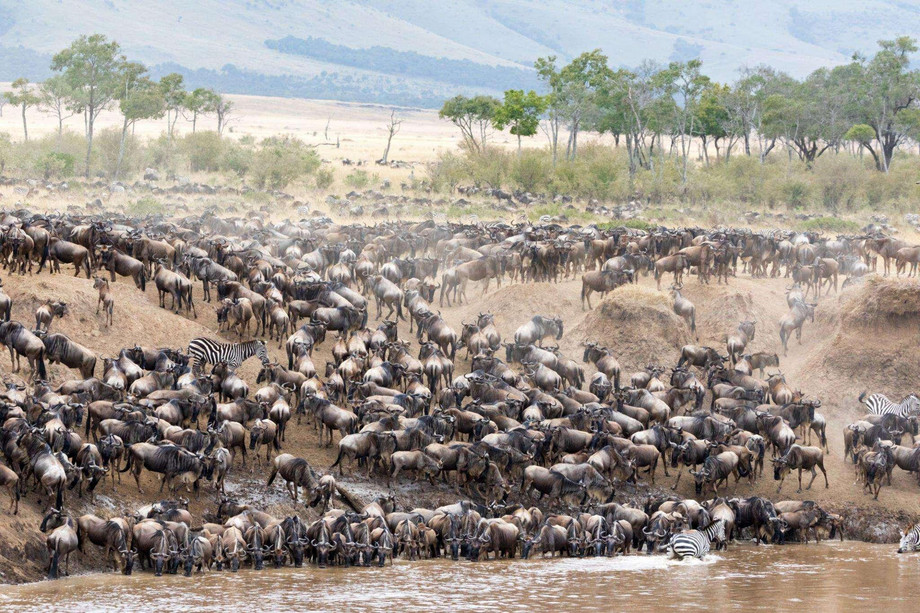The Great Wildebeest Migration, often referred to as one of the world's most breathtaking natural events, is a mesmerizing spectacle that unfolds on the East African plains. This remarkable journey of millions of wildebeests, zebras, and other herbivores as they traverse vast landscapes in search of food and water is not only a testament to the resilience of nature but also a once-in-a-lifetime experience for wildlife enthusiasts and tourists from around the globe. In this article, we will delve into the incredible phenomenon of the Great Wildebeest Migration, its awe-inspiring stages, and the significance it holds in the natural world.
The Phenomenon
The Great Wildebeest Migration is a year-round cyclical event that takes place primarily in Tanzania's Serengeti National Park and Kenya's Maasai Mara National Reserve. It involves the mass movement of approximately 1.5 million wildebeests, along with hundreds of thousands of zebras, gazelles, and other antelopes, as they traverse over 1,800 miles in a continuous search for fresh grazing lands and water sources. This migration is driven by the changing seasons, the availability of food, and the instinctual urge to ensure the survival of their species.
The Stages of the Migration
The Great Migration unfolds in several distinct stages throughout the year:
Calving Season (December to March): The journey begins in the southern Serengeti and the Ngorongoro Conservation Area, where the wildebeests gather to give birth to their young. The abundance of nutritious grasses during this period provides vital sustenance for the newborn calves.
Green Season (April to June): As the rains move northward, the herds follow, seeking fresh pastures. This transitional phase can lead to dramatic river crossings as they encounter swollen waterways, including the Grumeti River.
River Crossing (July to October): The highlight of the Great Migration occurs during the dry season when the herds must cross treacherous rivers, such as the Mara River, teeming with crocodiles and lurking predators. These dramatic river crossings are a thrilling spectacle that draws visitors from all over the world.
Return Journey (November): As the rains begin to fall once more, the herds begin their return journey southward to the southern Serengeti, where the cycle begins anew.
The Significance
The Great Wildebeest Migration is not only a breathtaking display of natural beauty but also plays a crucial role in the ecosystem of East Africa. Here are some of the significant impacts of this annual event:
Nutrient Cycling: As the wildebeests graze and move, they trample the grass, fertilize the soil with their dung, and help in nutrient cycling. This benefits not only the grasslands but also other herbivores and predators in the region.
Predation Opportunities: The migration provides an abundance of prey for large carnivores such as lions, leopards, and cheetahs. This surge in prey availability sustains the predator populations and their ecosystems.
Tourism and Conservation: The Great Migration is a major draw for tourists, contributing significantly to the local economies of Tanzania and Kenya. The revenue generated from tourism aids in the conservation efforts to protect the habitats and wildlife of the region.
Cultural Significance: The migration holds cultural importance for indigenous Maasai communities who coexist with the wildlife. It is a testament to their harmonious relationship with nature.
For More Info:-
Serengeti National Park Tanzania
Great Wildebeest Migration In Africa






Comments